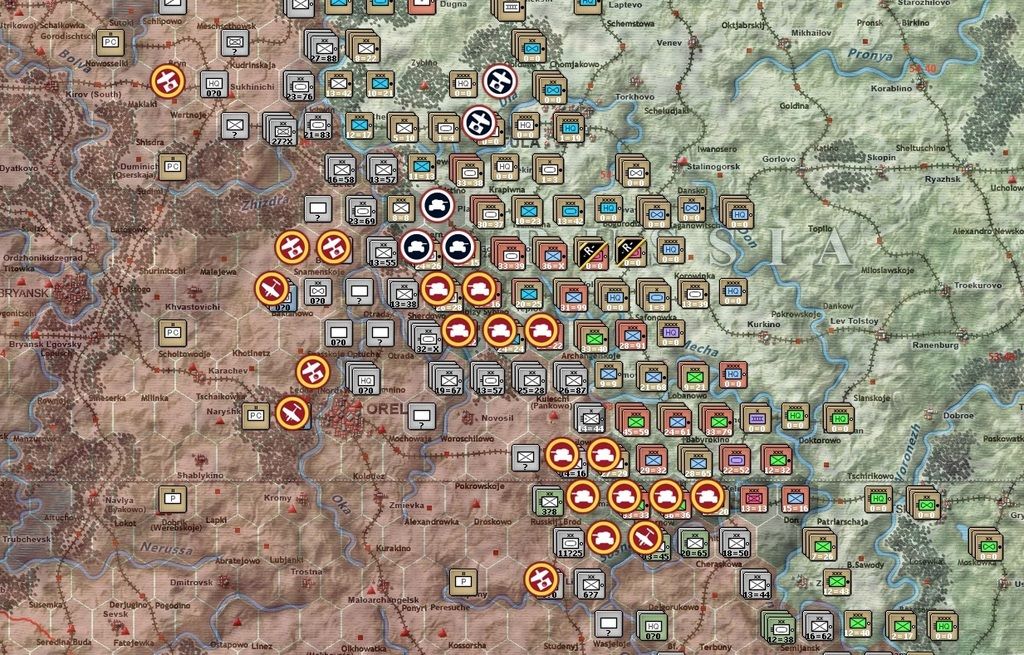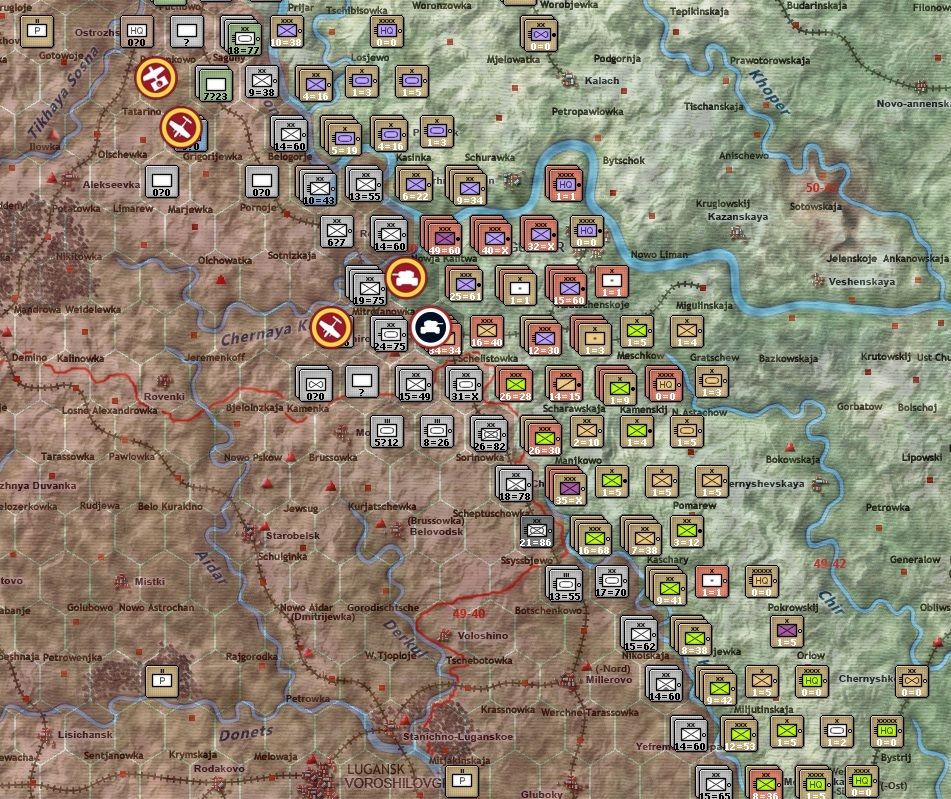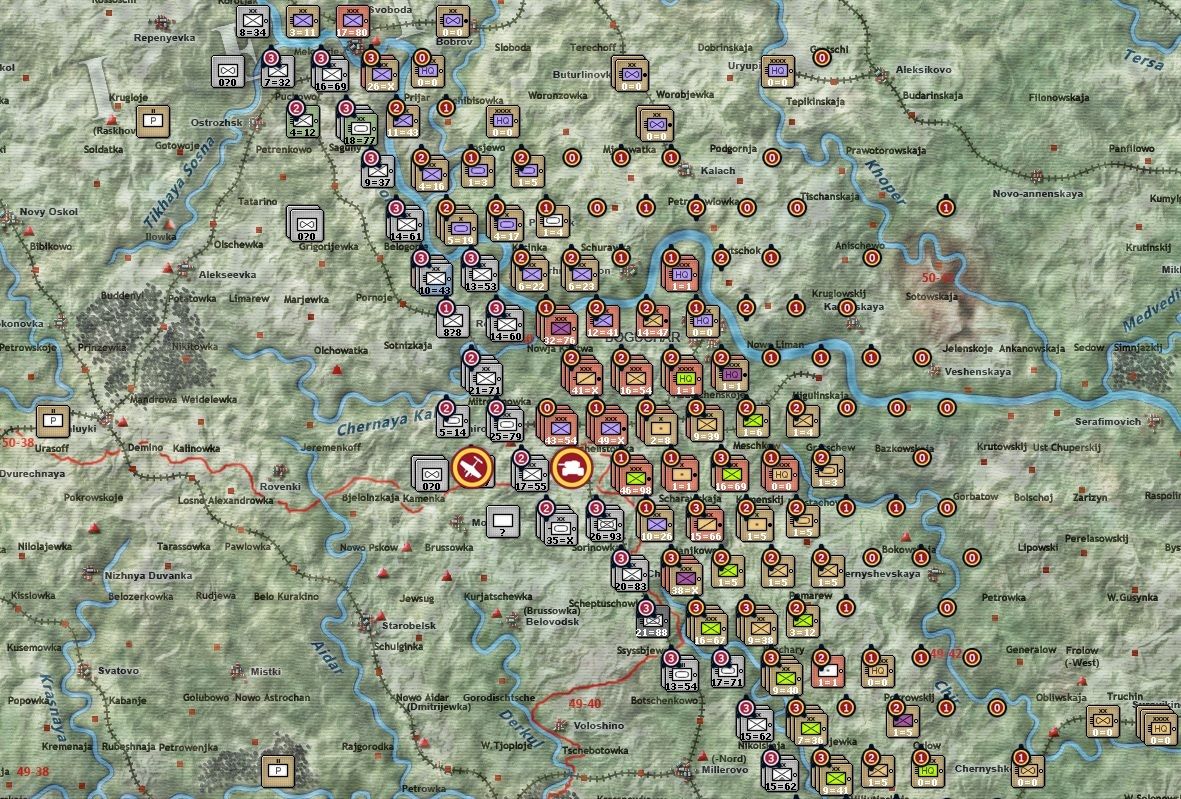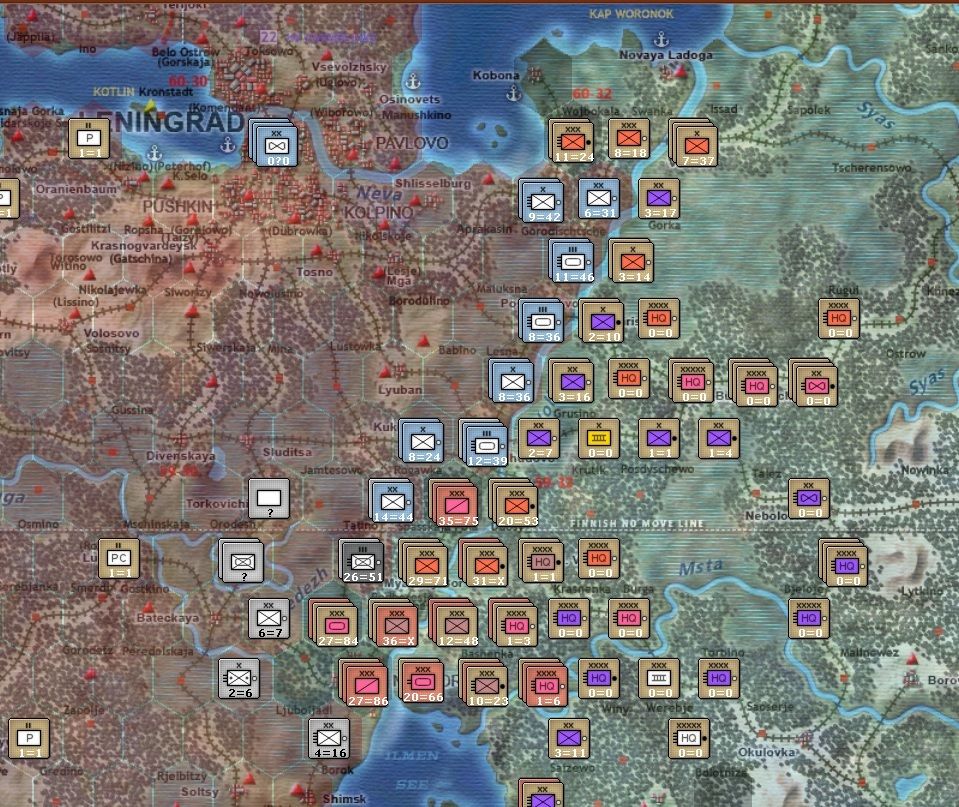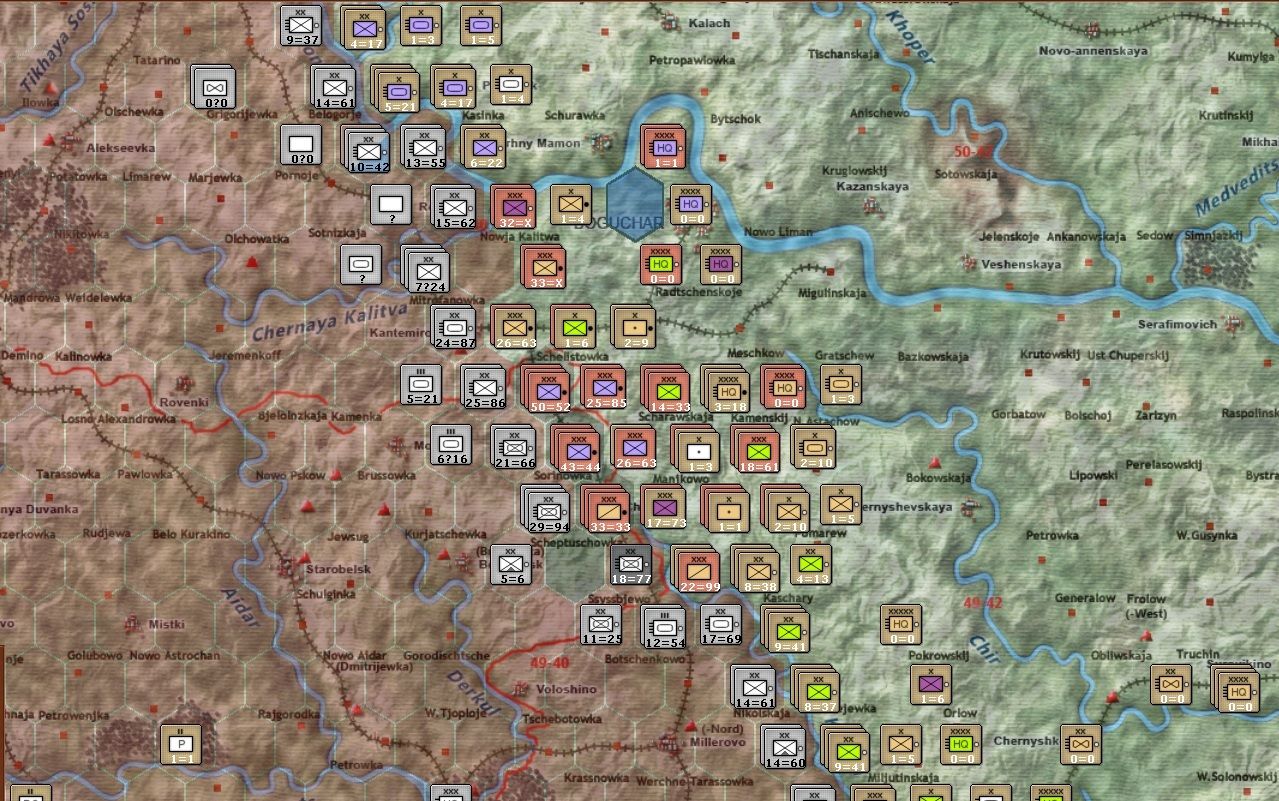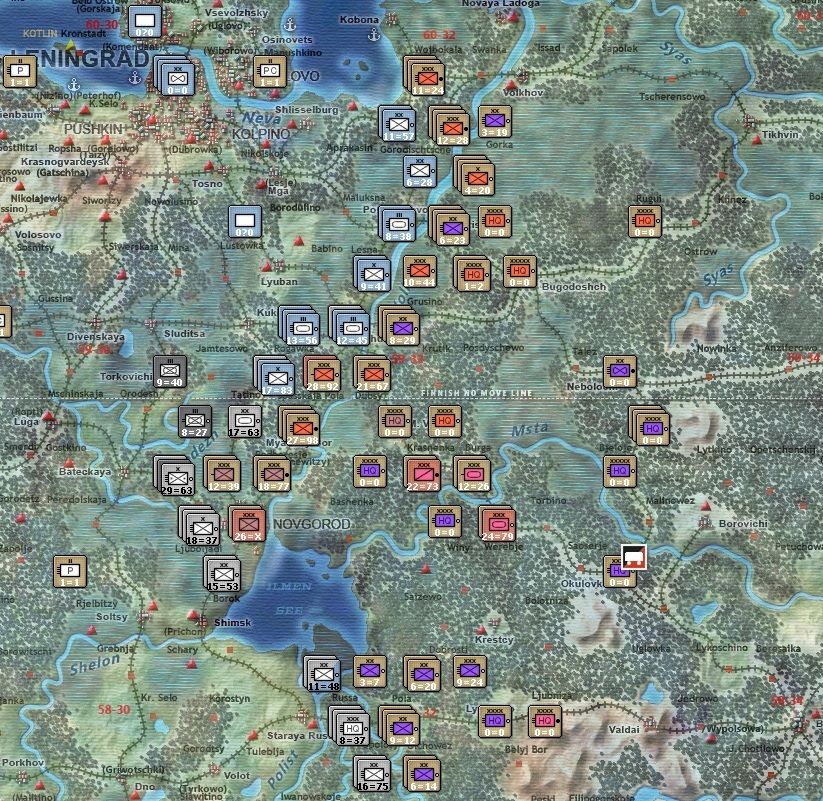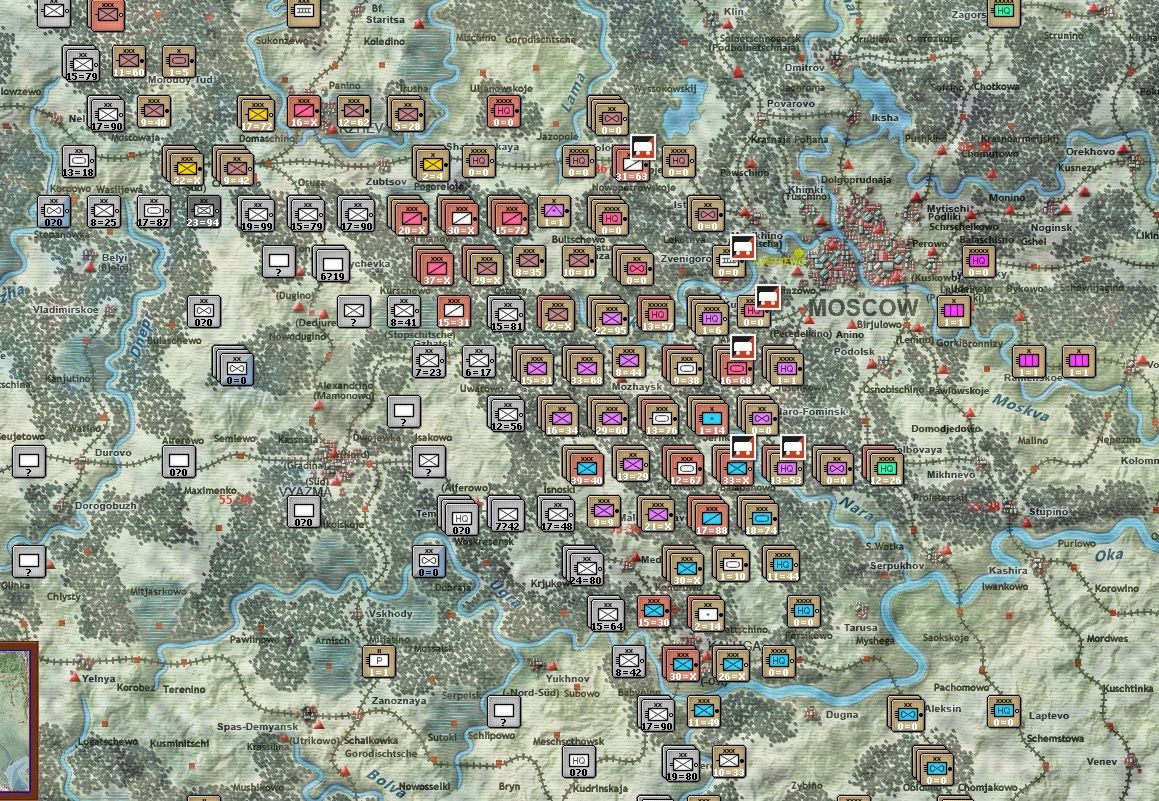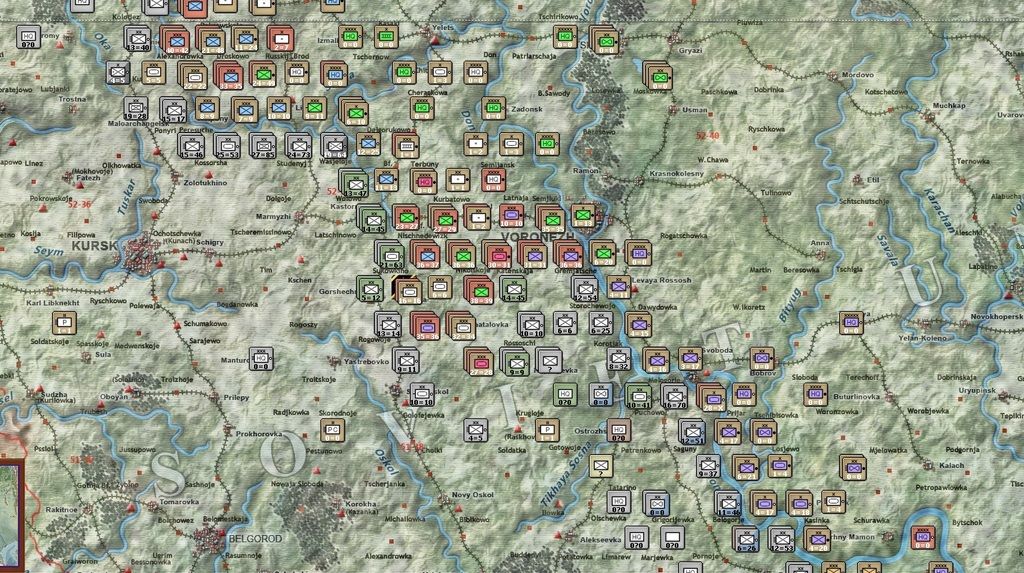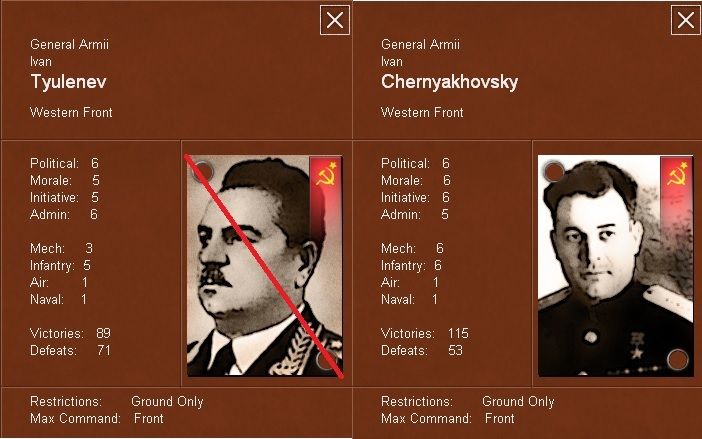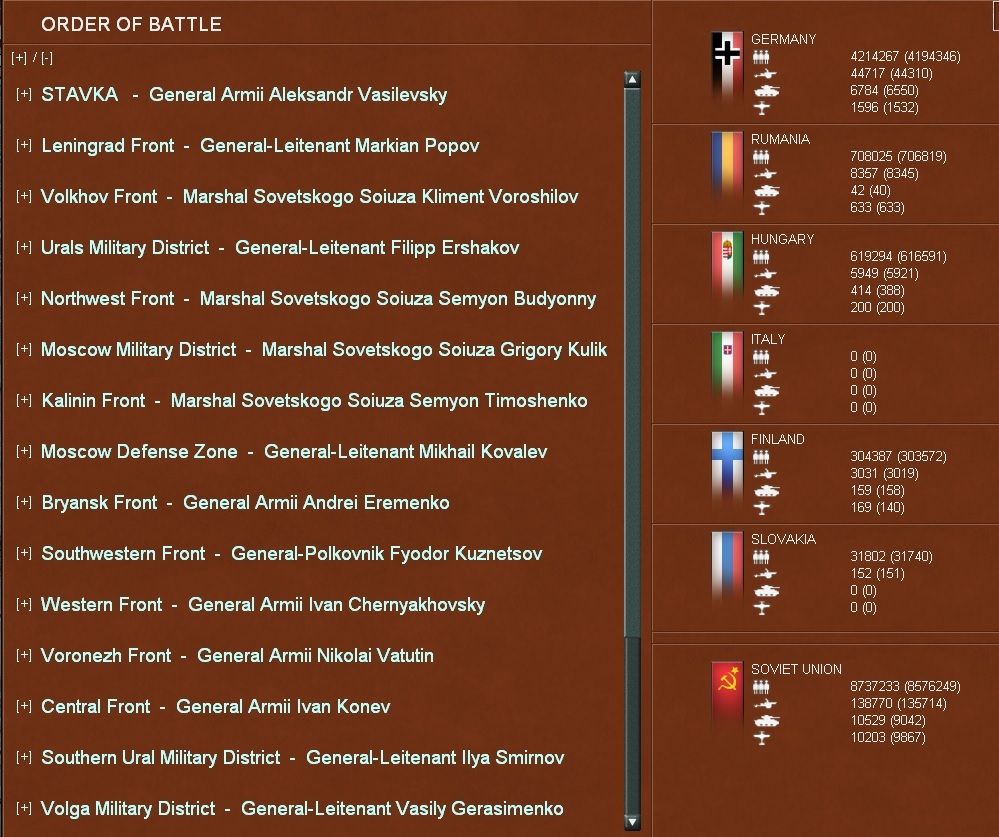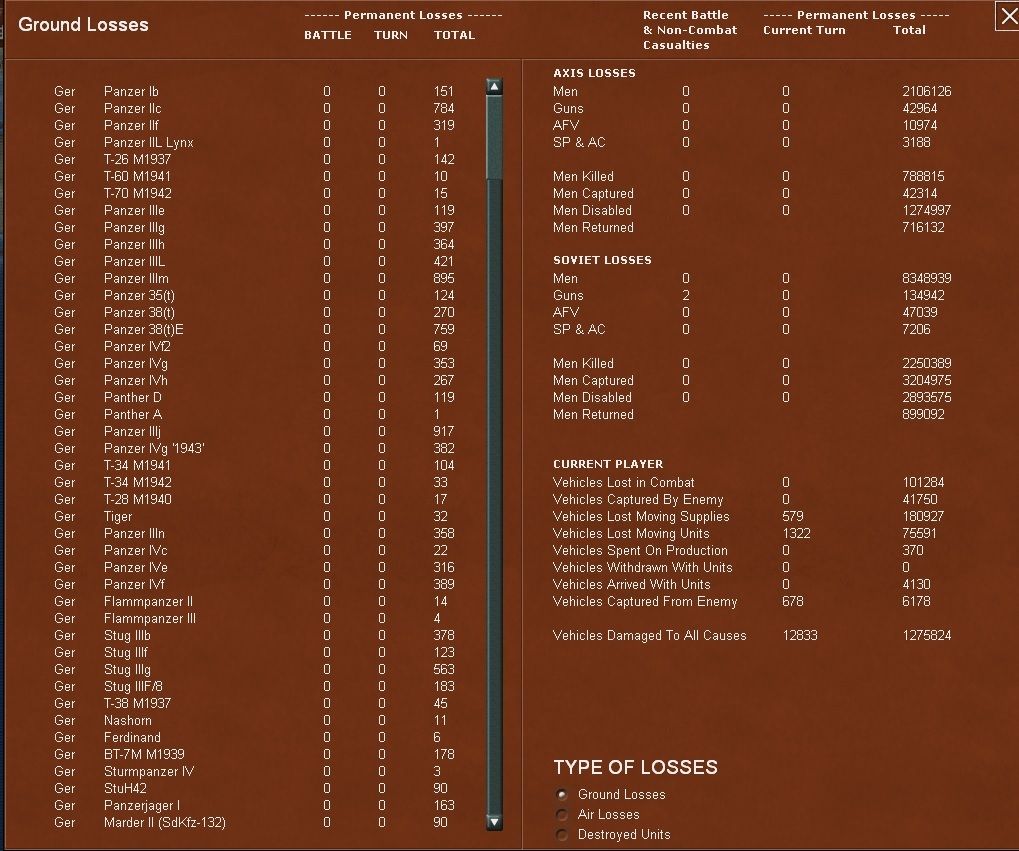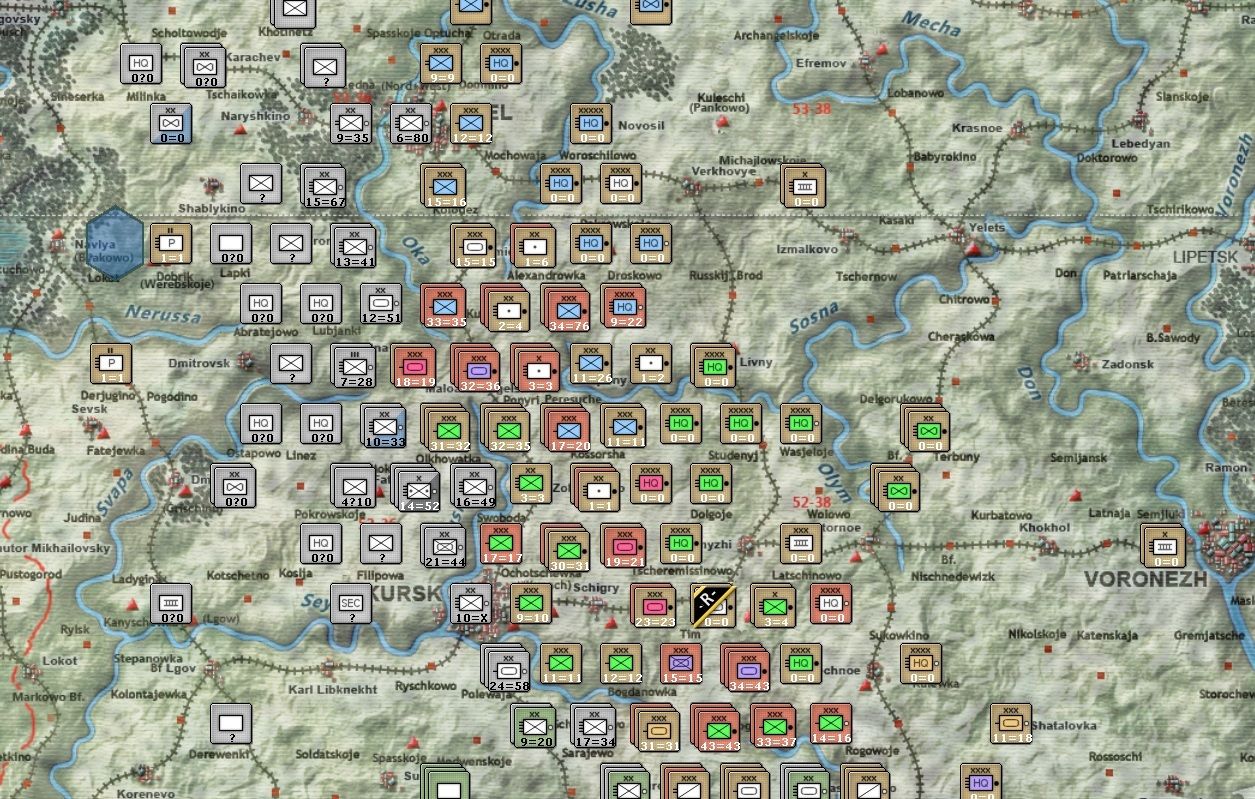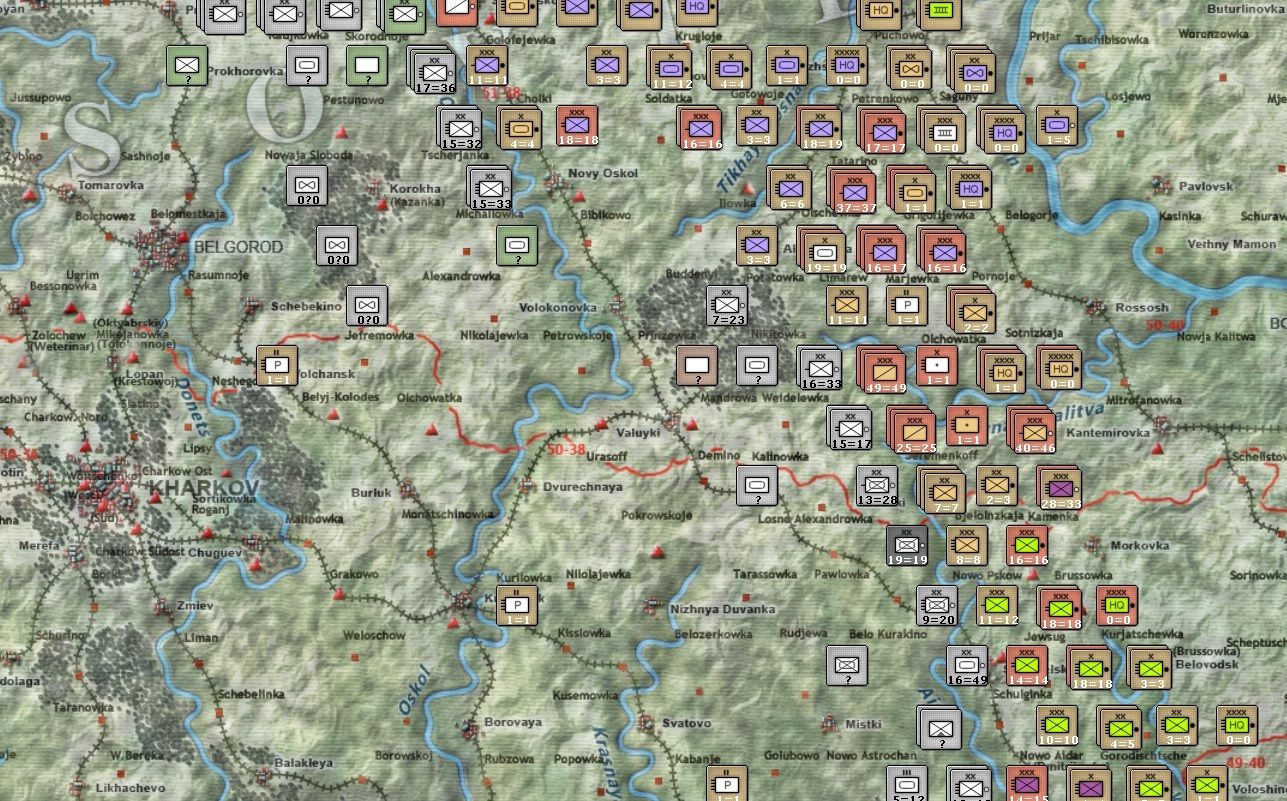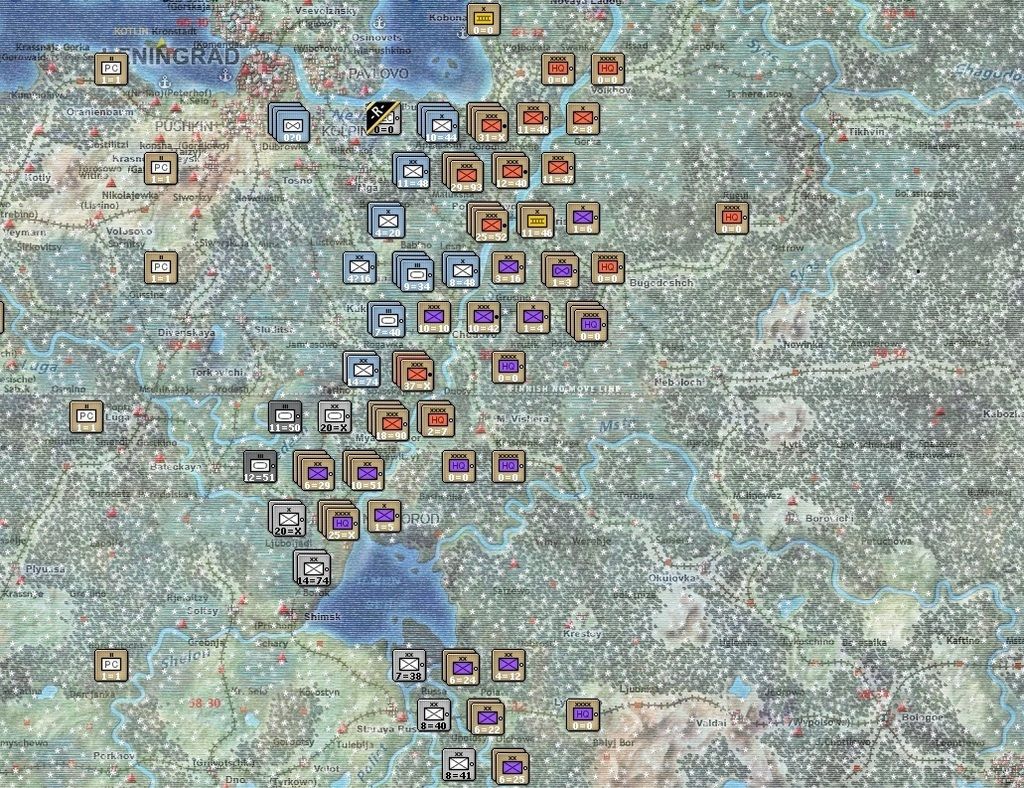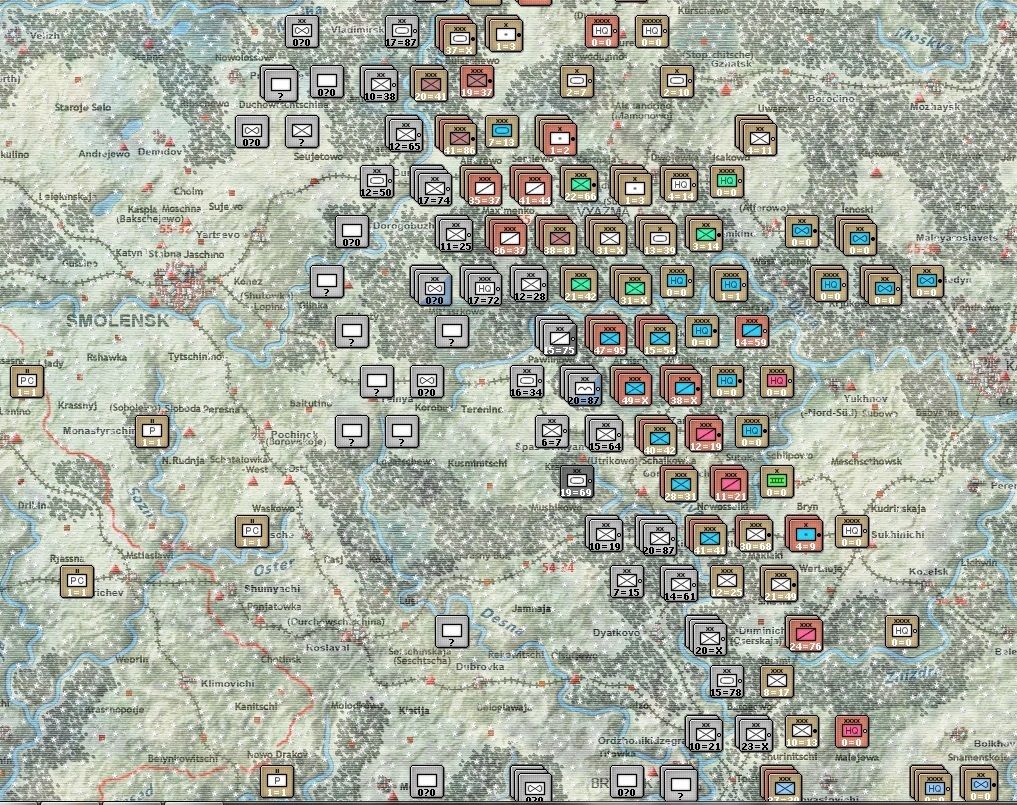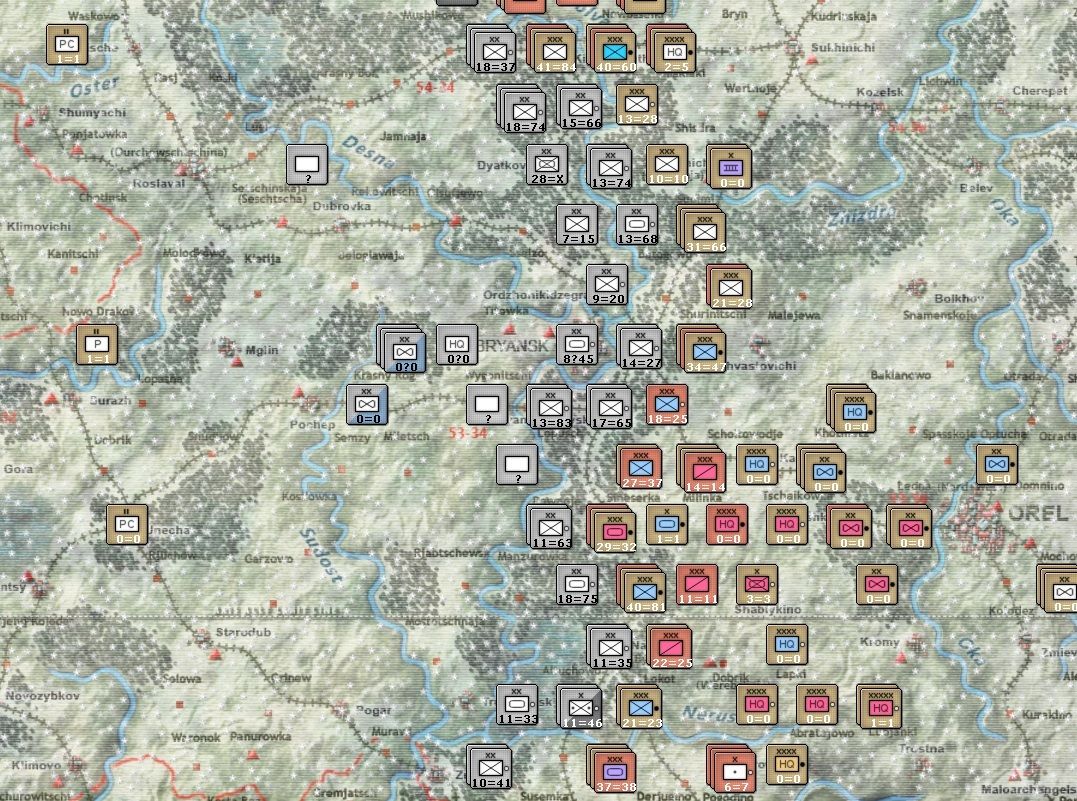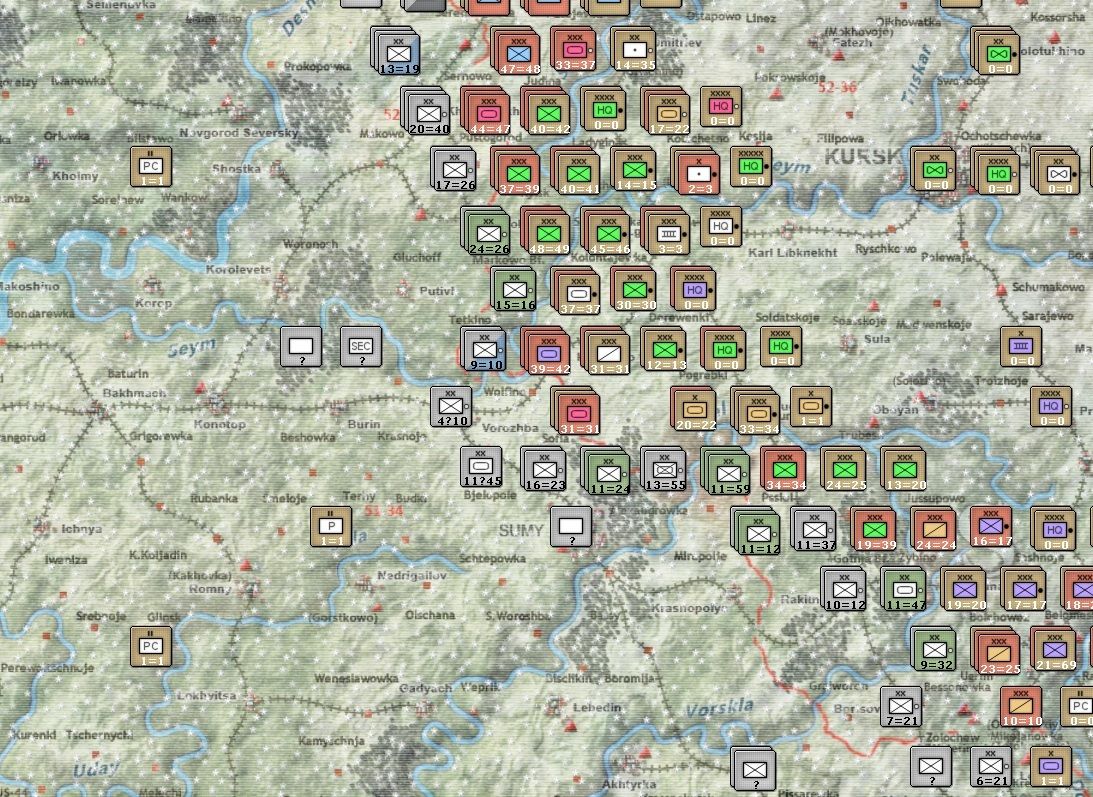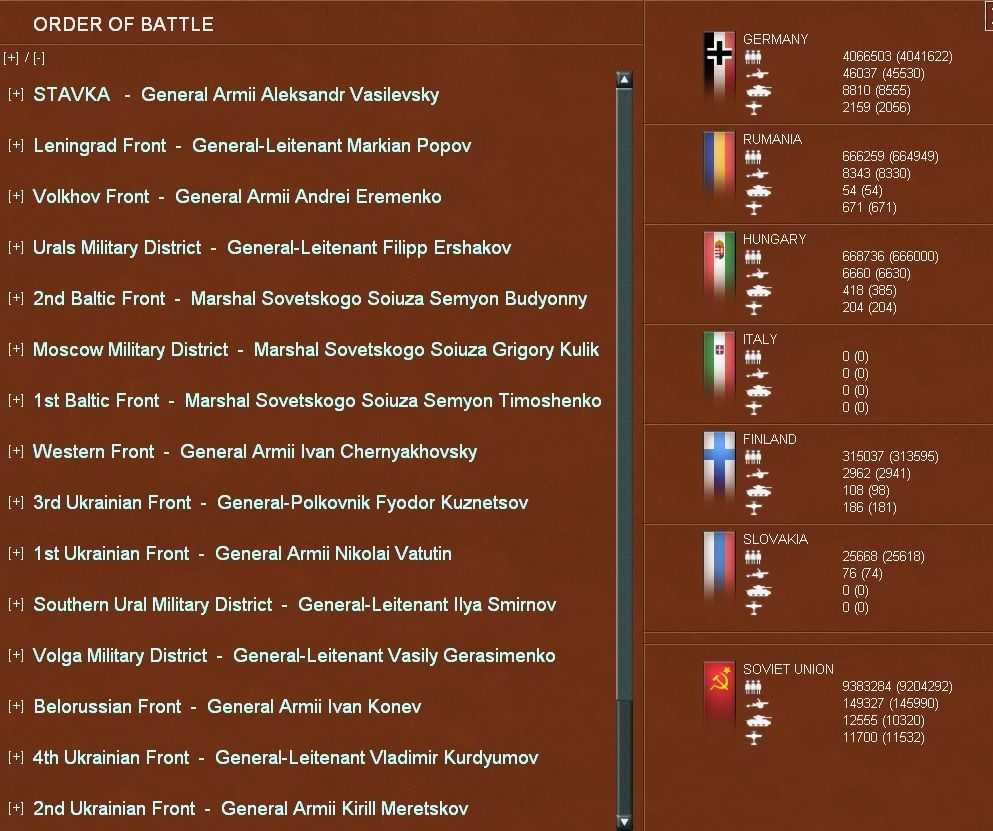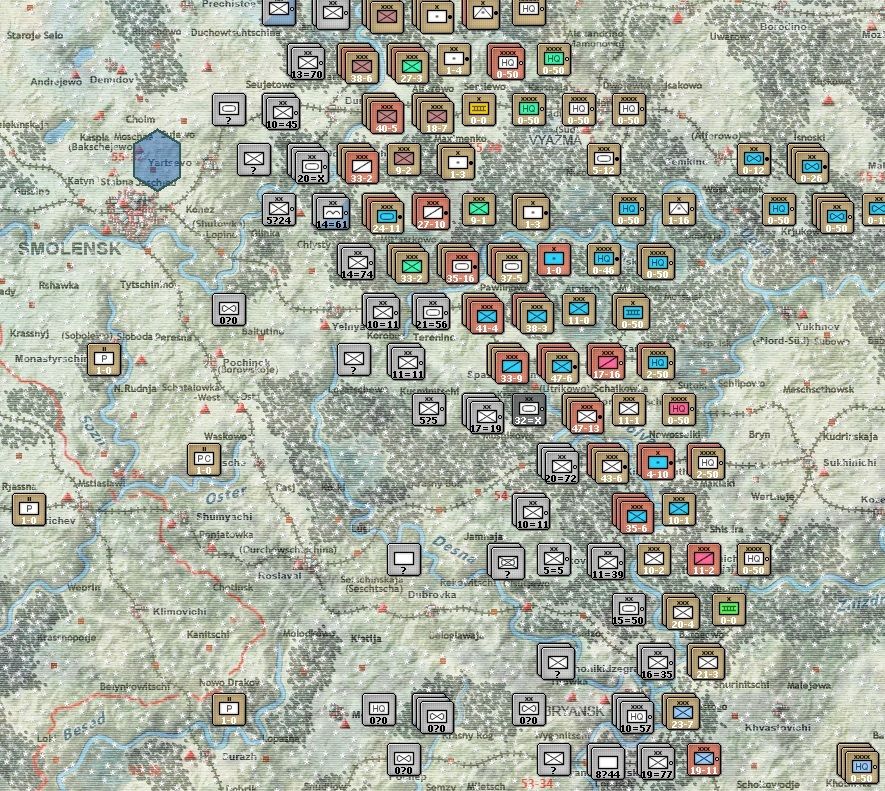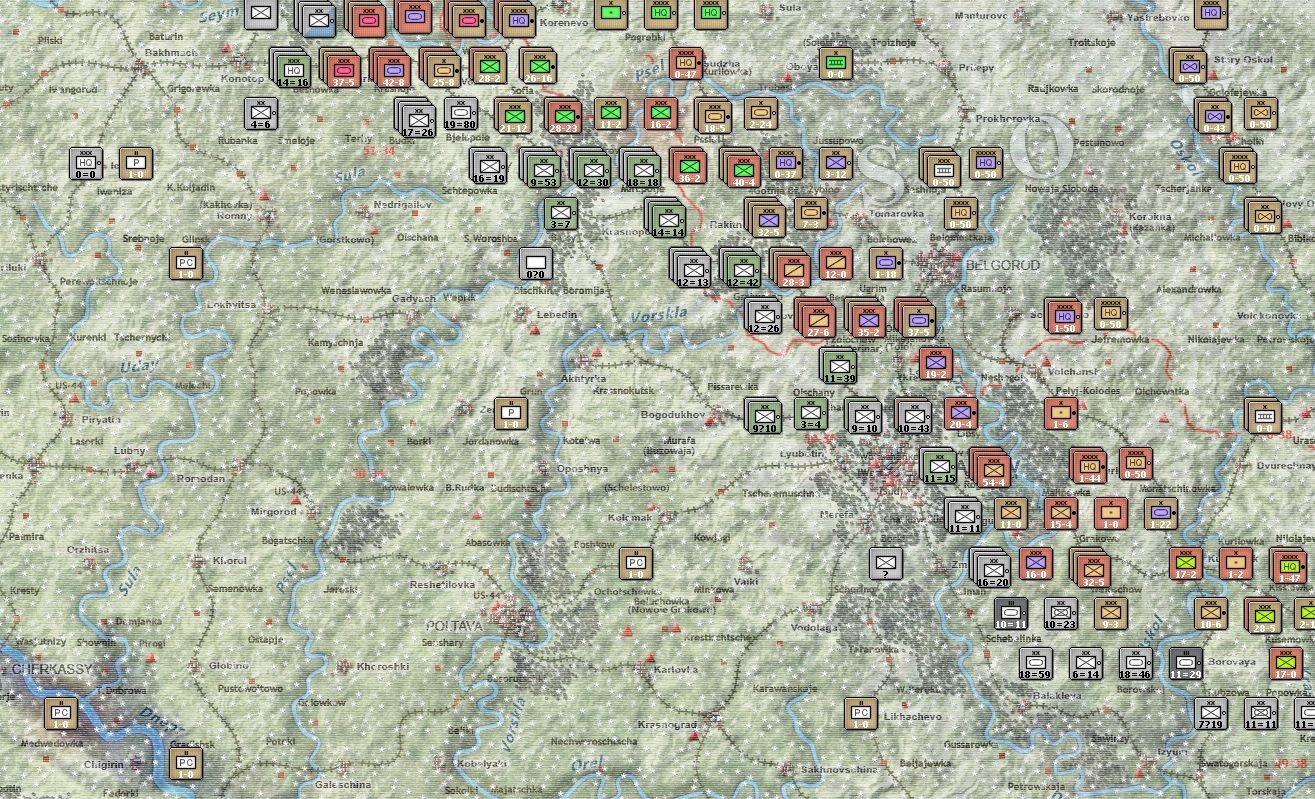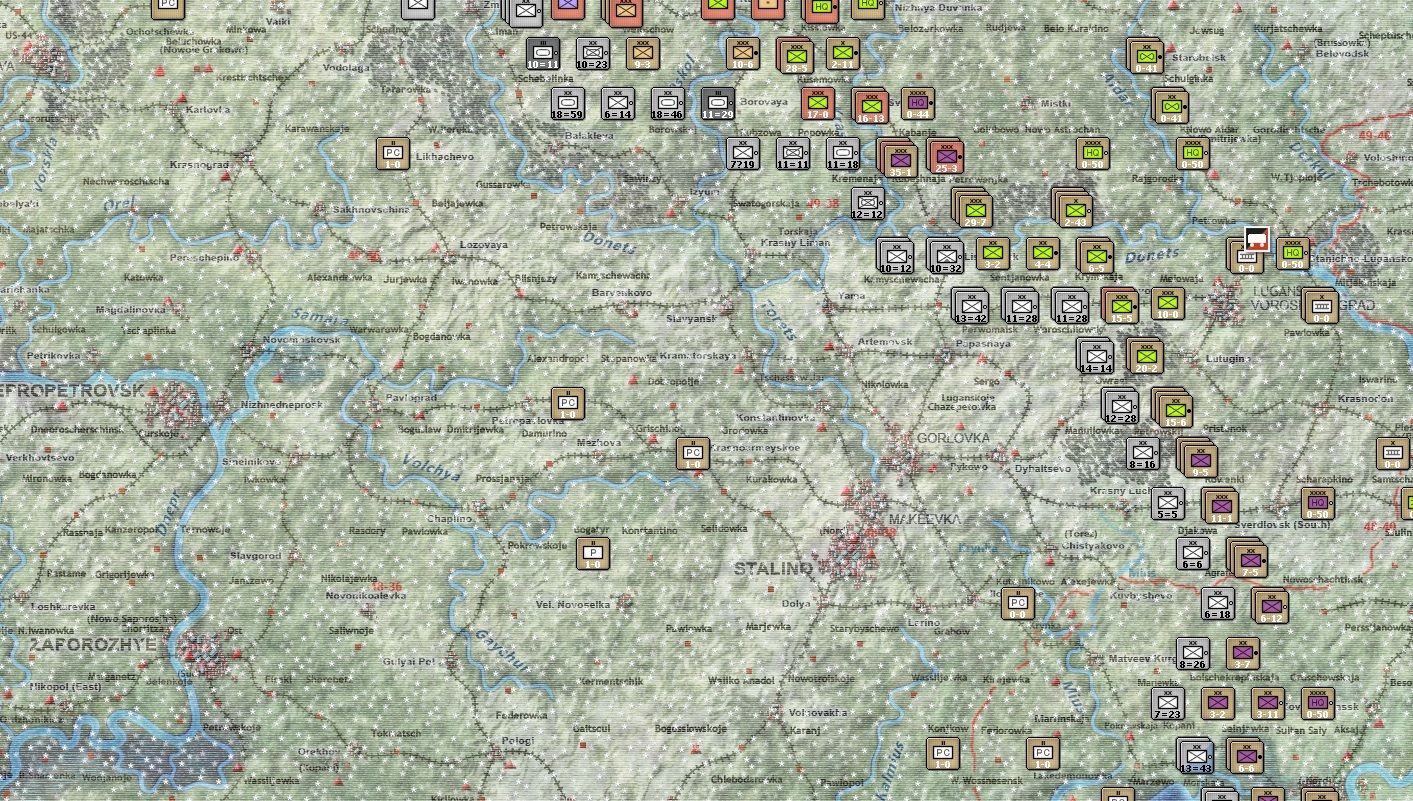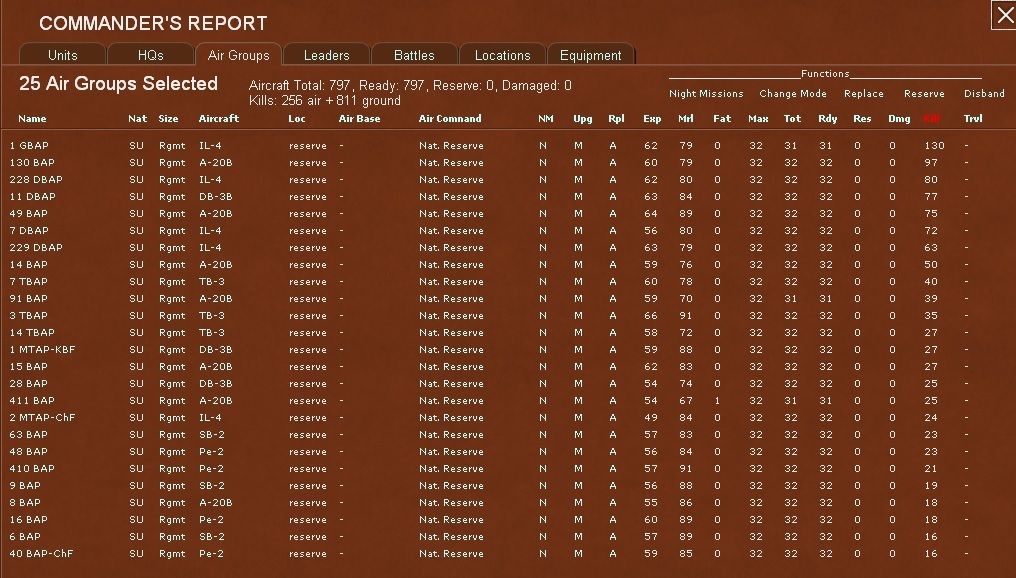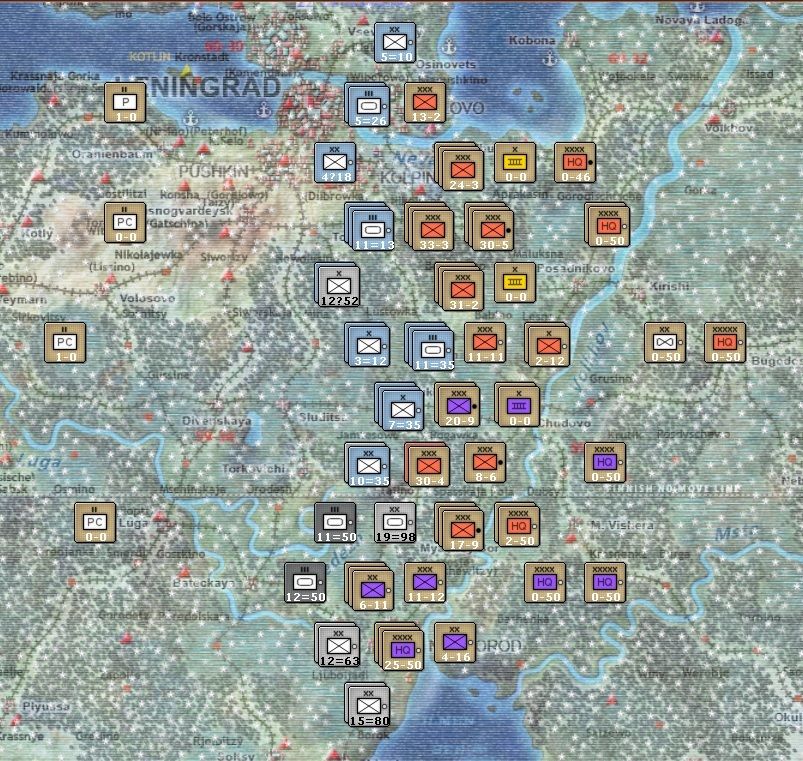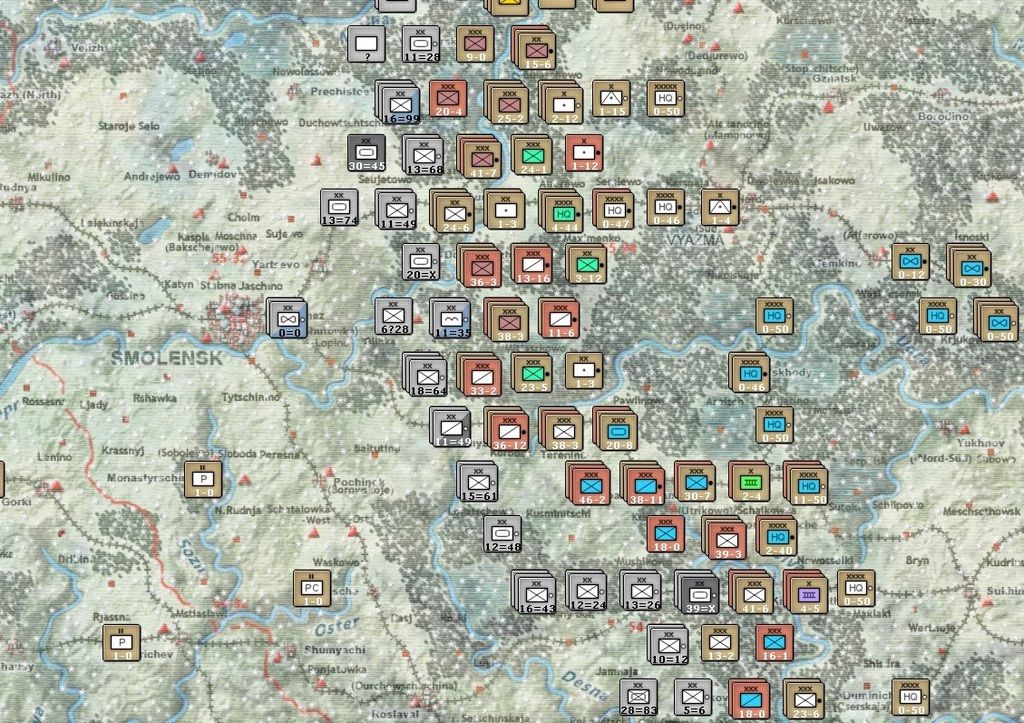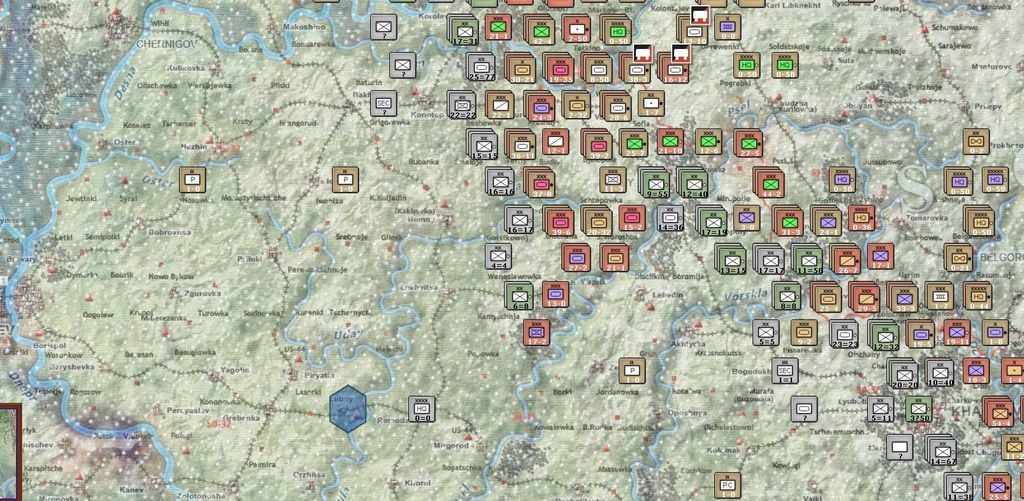14 October - 10 November 1943 (122nd through 125th weeks of the war)
Mud prevailed on all fronts during this period so there was little movement.
The Red Army expanded to nine million men. Rifle corps were expected to exceed 150 shortly after the offensive resumed.
The summer campaign against the German air forces was deemed a great success as it had been reduced from a high of 2,900 to 2,200. Many German pilots now flying their fighter aircraft were considerably less experienced. Their reconnaissance arm had been considerably reduced, making it more difficult to discern the direction of future Red army offensives.
The Armor Directorate directed the implementation the latest TO&E change to the Soviet tank corps, version 1943b, designed to finally put it on an equal footing with German tank divisions. Each corps would now be authorized 195 medium tanks. The light T-70 medium tank would disappear from these units, while continuing to remain a part of cavalry and mechanized corps.
2nd Tank Army was renamed 2nd Guards Tank Army.
Volkhov Front commander, Marshal Sovetskogo Soiuza Kliment Voroshilov, was dismissed and replaced by General Armii Andrei Eremenko.
Voroshilov's political rating really should be reduced. Sure, he was a Stalin favorite, but he wasn't getting assigned to High and Front commands constantly either.
OOB
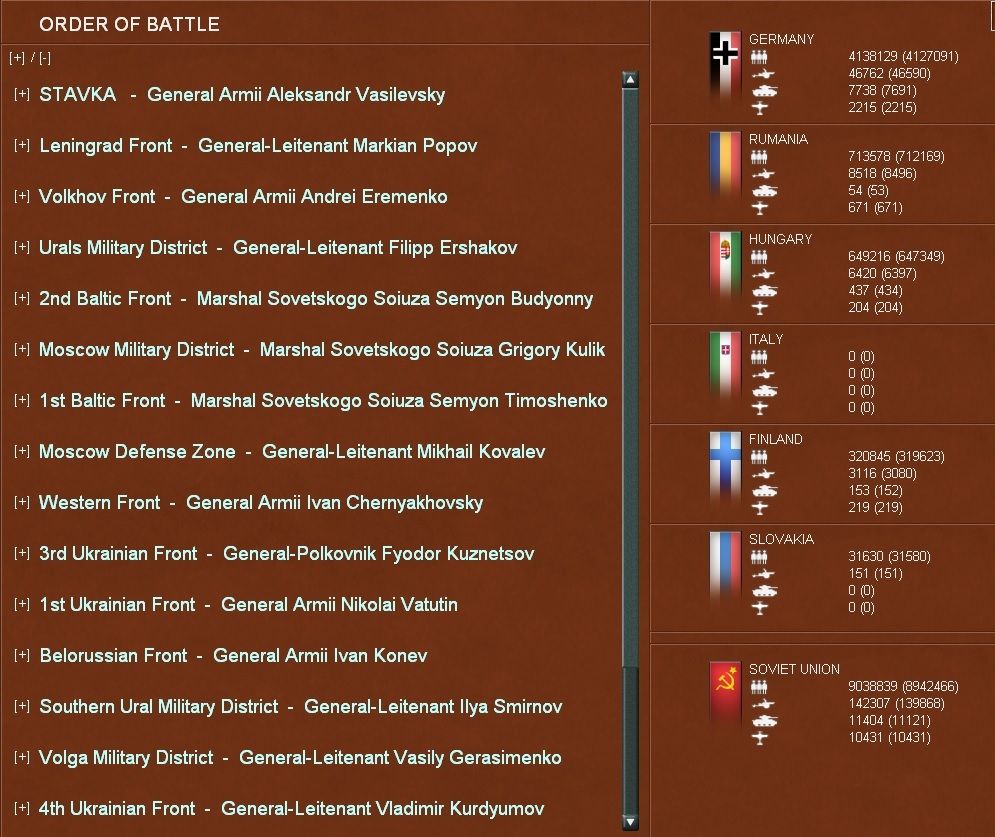
Ground losses

AFV inventory

Moscow
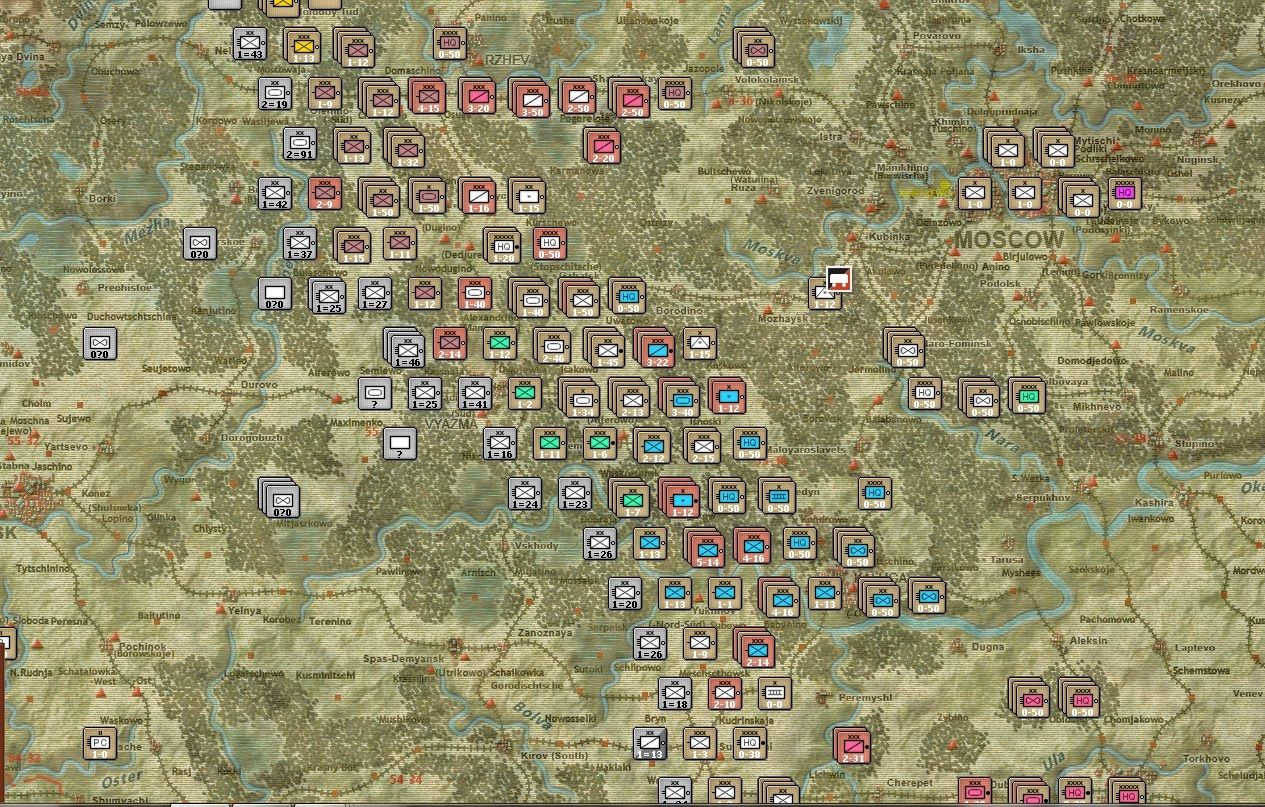
Kursk-Belgorod



